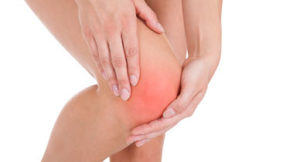What is Knee pain?
Knee pain is a common complaint that affects people of all ages. This pain maybe secondary to the knee joint itself secondary to arthritic changes that occur over time or can be related due to an injury to the structures that form the knee such as the meniscus or ligaments. Less commonly, people can also experience knee pain that is referred from the lower back due to a pinched nerve or secondary to poor blood flow.
With knee arthritis that happens over time and is more common in people that are obese and those that exhibit an active life style. In this group of people bone spurs within the knee joint that can limit joint mobility and contribute to pain.
Some people may continue to experience knee pain despite having a knee replacement and this is usually secondary to the irritation of nerve around the knee that cause the patient to have pain.
Thus, proper workup with history and physical exam is necessary to identify the exact cause of your pain to formulate the proper treatment plan. Workup may require diagnostic nerve blocks, imaging and/or electrodiagnostic studies (Nerve conduction studies and Electromyography).
Risk factors for sacroiliac joint pain: Obesity, family history of arthritis, overuse secondary to work or sports, age and injury.
Potential symptoms that you may experience with this condition:
- Knee joint pain
- Pain that worsens with activity such as walking, running, coming down stairs
- Limited range of motion of the knee
- Burning, numbness and tingling sensation in the knee or surrounding structures
- Muscle stiffness, spasms and weakness in the lower extremities
- Clinking sound of knee joint
- Swelling of SI joint or surrounding tissue
Treatment options for this condition:
- Physical therapy and/or Occupational therapy
Knee brace - Medications:
- Anti-inflammatory therapy
- Nerve pain medications: Neurontin, Lyrica, Amitriptyline, Nortriptyline
- Muscle relaxants
- Hot and Cold compressors
- Interventions
- Knee joint or bursa injection with local anesthetic and steroid
- Knee joint injection of with Hyaluronic acid
- Knee joint injection with platelet rich plasma
- Bursa injection with local anesthetic and steroid
- Lumbar Epidural steroid injections
- Genicular nerve block followed by radiofrequency ablation
- Surgery. This is considered when less invasive therapy is not successful or when is considered to be the best option for the cause of your knee joint pain.

